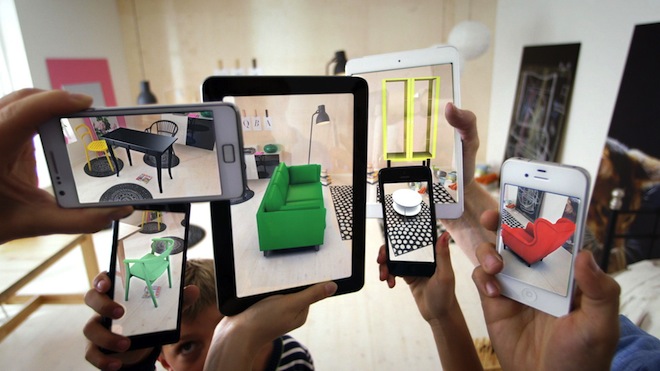The gig economy is alive and well. In fact, this modern online phenomenon has only…
The Virtual Revolution Goes Mobile
If you’re in marketing, the augmented and virtual reality experience may seem a bit old hat by now. But the virtual revolution is taking a new shape – thanks to the ever transforming capabilities of our mobile devices.
The possibilities of VR/AR in experiential marketing alone are virtually limitless. Whether you’re “trying on” an outfit before ordering, or testing out furniture in your own living room before ever entering the showroom, in essence, these technologies are changing the fundamental ways brands, consumers, and mobile devices interact.

IKEA is a perfect example. ARKit, the brand’s immersive application, allows shoppers to position and configure virtual furniture in their homes. According to Julie Shumaker, Vice President of Advertiser Solutions at Unity Technologies, the value is in allowing consumers to “engage with items and interact” before investing in a purchase.
Not only products and services benefit from the rise in virtual and augmented reality. The technology lends itself particularly well to the entertainment industry. Recent studio campaigns like “Star Wars: Find the Force II” and “The Walking Dead Encounter,” engage with fans-on-the-go in evermore immersive ways.
“Star Wars sent fans to special locations to ‘find’ digital characters from The Last Jedi, complete with Star Destroyers looming high over global landmarks like the Golden Gate Bridge. The Walking Dead’s experience lets you collect AR zombies to create scenes with them directly from your phone. To maximize engagement, fans were further encouraged to ‘flesh’ out their collections by tuning into The Walking Dead and waiting for select Mountain Dew TV spots that functioned as triggers to unlock exclusive zombies. Efforts like these offer users standalone, valuable experiences in hopes that it invites an ongoing relationship rather than trying to force the conversation,” explains Jesse Damiani in an article for Quartz.
Last year, Unity Technologies launched its “Virtual Room” mini-app, partnering with Lionsgate for the pilot. The project created a VR integration for Jigsaw, the latest in the Saw movie franchise, inviting players to interact with objects and determine how to avoid an untimely, gruesome death. In doing so, players became more active, invested participants in the movie and the story behind it.
“What we’ve been really trying to play with is doubling down on the things that can be entertainment,” says Agatha Bochenek, Unity’s head of VR/AR and mobile ad sales. “So, Jigsaw being a great example—it’s [not just] an ad: It’s a piece of entertainment in-and-of itself. The ad shouldn’t be boring. It shouldn’t just throw, ‘Buy Tickets’ in your face the whole time; it should make you feel what the movie feels like.”
Despite the great potential to engage bored, aggravated audiences tired of annoying pop-ups and endless emails in evermore immersive ways, many marketers resist exploring the full potential of VR/AR. A 2017 report issued by Yes Lifecycle Marketing found that only 8% of marketers are currently using VR, and 7% AR, for advertising purposes. Only 21% and 25%, respectively, show an interest in using the technologies in the future. A further 57% and 55%, respectively, state that VR and AR don’t apply to their organizations. Wherein lies the problem?
“Advertising experiences in Virtual Reality (VR) and Augmented Reality (AR) offer plenty of potential to get consumers interested in advertising again – but brands and advertisers still need to overcome the high cost, ROI, and storytelling challenges associated with creating these experiences,” explains Ayesha Salim in The Drum.
According to Deutsche Bank, the number of mobile VR users worldwide leapt from 6.5 million in 2015 to 22.5 million in 2016. And the numbers are only expected to increase. That’s a lot of audience to capture. What’s more, “A consumer poll by Vibrant Media found 40% of consumers saying VR and AR ads would make them less likely to use an ad-blocker,” Salim explains.
“Consumer demand will continue to push brands to innovate. 26% of consumers expect to engage with AR more in 2017 than they did in 2016. And 22% of consumers already engage with AR more than once a week,” Oath, a subsidiary of Verizon, projected only 6 months ago.
It seems consumers are speaking. But are marketers listening?



